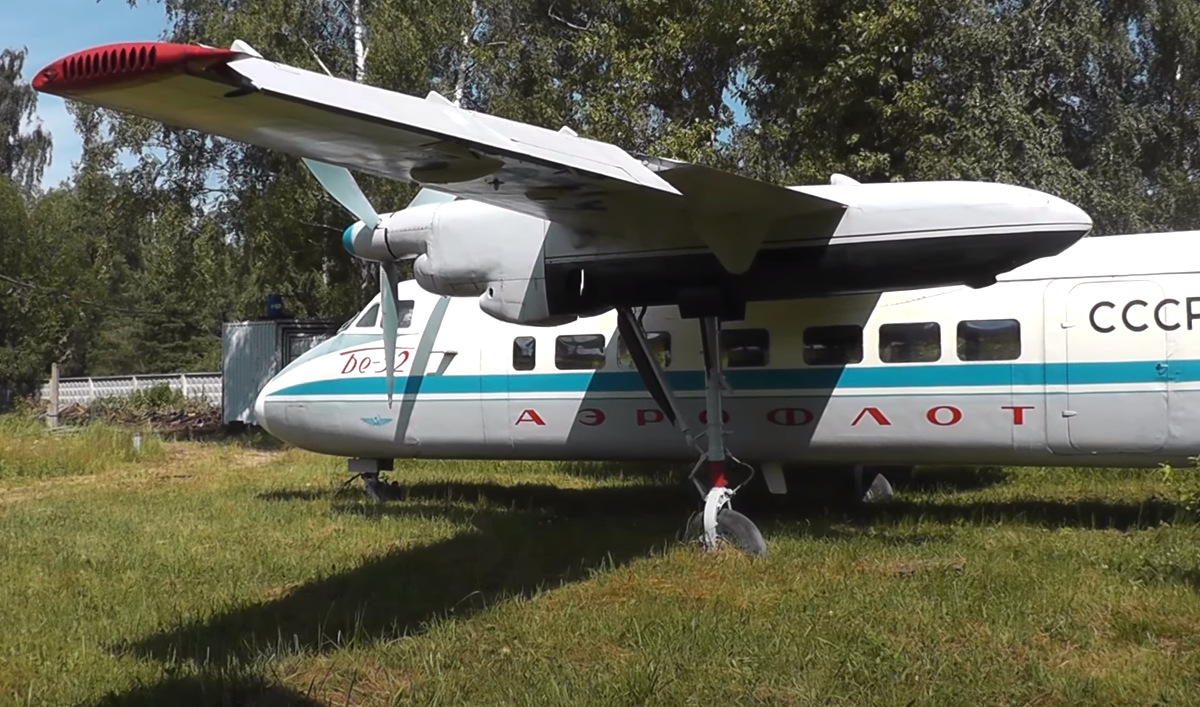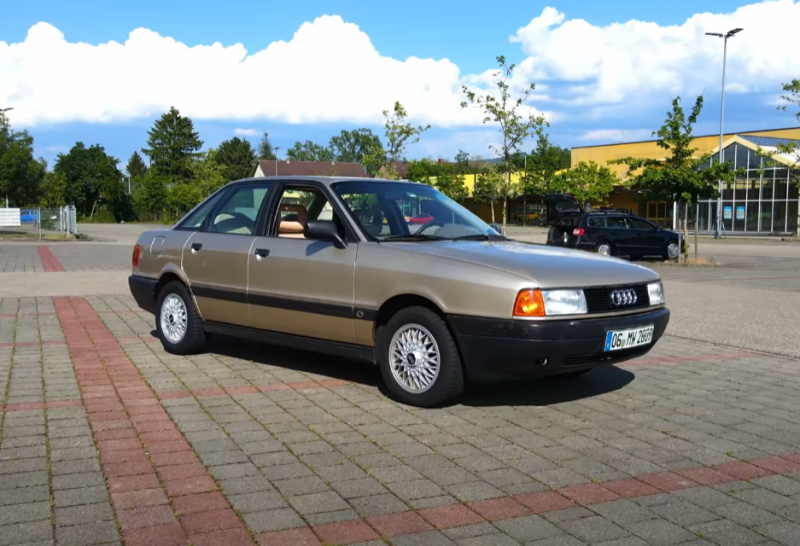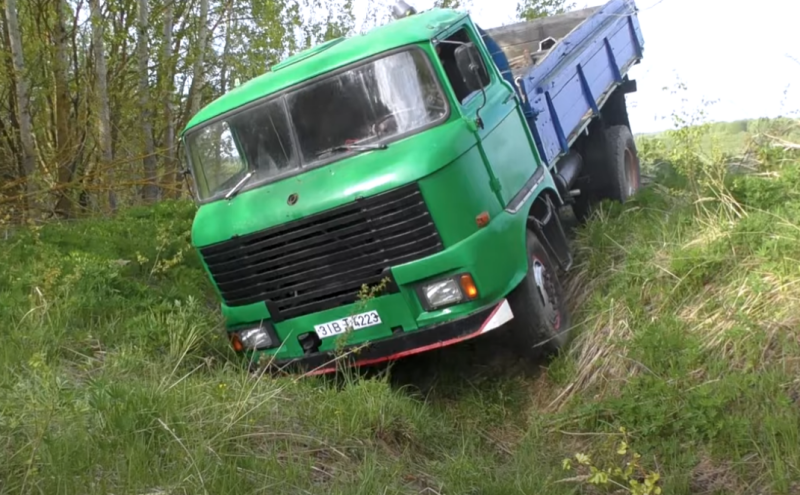By that time, the Antonov Design Bureau was already developing the An-28. Beriev in 1965 began to design his own aircraft, which was assigned the Be-30 index (inside the bureau it was called "Product P"). Initially, the aircraft was supposed to install a pair of TVD-10 engines. In 1967, they made three prototypes of the liner, plus one airframe.
 An-28 is a successful rival of the Be-30, which went into the series. Photo: YouTube.com
An-28 is a successful rival of the Be-30, which went into the series. Photo: YouTube.comThe start of full-scale tests was hampered due to the lack of engines that were manufactured at the Omsk Engine Plant. Nevertheless, the model of the aircraft managed to visit VDNKh, where he received a diploma.
First flights
In 1968, the engines were completed and factory tests began first. After fine-tuning and registration of technical documentation in July of the same year, the Be-30 took to the skies for the first time. Factory tests were successful and the car was presented to the MGA for the "state exam". 203 flights were performed during the year. In 1969, the aircraft was demonstrated at Le Bourget, at the aerospace show. The experts were amazed by the weight perfection of the model: subsequently, the designers received an award for saving weight.
After reviewing the test results and examining the aircraft, the then head of the Ministry of Aviation E.F. Loginov said bluntly that he was ready to order a large batch of Be-30s.
The car was tested in the most severe climatic conditions: it flew over Ashgabat at +40° and Novosibirsk at -40°. They even took off from a runway made of pebbles to see if the stones would break through the blades. Based on the results of the tests, improvements were made:
✅ increased engine power to 1050 "horses"
✅ the number of passengers increased to 19 people
✅ put a cargo hatch 1,3x1,4 m
✅ increased payload up to 2 tons
✅ additional fuel tanks were integrated into the design
Further flights (their number exceeded 4000) showed the exceptional reliability of the aircraft. At the end of 1969, the MGA and the Ministry of the Aviation Industry made a joint decision to start production of an experimental series of five aircraft at the Taganrog aircraft plant. It seemed: ahead - a cloudless future!
Be-32
This is a modernized version of the Be-30. The model differs from its predecessor in a different internal layout. This is the same all-metal monoplane with a single-keel plumage. The aircraft was equipped with the most modern navigational instruments, which made it possible to fly in any weather conditions. There was an autopilot, "able" not only to fly the liner in a straight line, but also to land. For that time - a rarity.
 There was even a monitor in the cockpit. Photo: YouTube.com
There was even a monitor in the cockpit. Photo: YouTube.comTo prevent foreign objects from getting into the engines, the landing gear was lengthened. And the car had a lot of interesting features. One of them is an overrunning clutch that connected the propellers with a shaft passing through the center section. For what? If one of the motors failed, its blades still continued to rotate, which increased the chances of a successful landing.
The Be-32 is the first domestic aircraft that could move tail first on the ground.
The presence of a reverse made it possible to drastically reduce the length of the runway during takeoff and landing. When comparing the technical parameters with the main competitor of the An-28, the advantages of the Be-32 immediately became clear. The opponent had only one "trump card" - an enlarged cargo compartment.
Preference given to L-410
Yes exactly! "Upstairs" decided within the framework of the CMEA "to support the developing Czechoslovak aircraft industry." The USSR Council of Ministers purchased a large batch of L-410s, and the Be-32 project was slowly curtailed in 1972
 The L-410 is a successful competitor to the Be-32/32. Photo: YouTube.com
The L-410 is a successful competitor to the Be-32/32. Photo: YouTube.comHowever, for some time, work to improve the aircraft was still ongoing. The Be-32 was certified in 1974: according to the conclusion, it met all the requirements for civil aircraft.
In 1976, the aircraft set a record for rate of climb: the Be-3 "reached" a height of 32 km in 2 minutes. 24,6 seconds, and 6 km were reached in 5 minutes, 17,8 seconds. When the then head of the Ministry of Aviation, Dementiev, was asked to send the results to the FAI, the official objected. Later, the Americans broke the record, and the achievement of the Be-32 remained as the all-Union one.
And still they worked on the plane! The Be-32K model was created. Even more powerful engines RK-6-A-65-B (Canada) were put on it. A modified transmission was used, thanks to which the length of the runway was reduced to 450 m. True, the use of innovation was hampered by the lack of the necessary bearings. LTH Be-32K:
✅ wingspan - 17 m
✅ length, height - 15,7 and 5,52 m
✅ empty weight (maximum takeoff) - 4,9 (7,3) tons
✅ cruising (highest) speed - 420-440 (500) km / h
✅ highest height - 4,2 km
✅ range at full load (minimum) - 885 (2050) km
✅ number of passengers - up to 19 people
Everything was ready for mass production, which, thanks to the appearance on the "stage" of the L-410, did not begin.
Second birth
The remaining “alive” cars gradually dismantled who had such an opportunity. By the beginning of the 80s, only a couple of aircraft remained intact - one at the factory airfield in Taganrog, the second - in the Monino Museum. It seemed that after the quiet cover of the project, the aircraft was forgotten forever. However, in the early 90s, he was suddenly remembered, which was facilitated by the euphoria of conversion that swept the country.
 The salon is modest, but luxury is not required here. Photo: YouTube.com
The salon is modest, but luxury is not required here. Photo: YouTube.comBy this time, the maintenance and repair of the L-410 had become very problematic: the Czechs demanded a currency that was not available in the country. The Be-32 preserved in Taganrog was decided to be restored. When the current was given on board, to everyone's surprise, the plane came to life. It was inspected, examined, and then repaired. In May 1993, the liner made a test flight, then 17 more. According to the report, the aircraft met all the characteristics that were obtained during state tests in 1971.
Airshow
The aircraft again began to be shown at exhibitions. First, in Le Bourget (1993), where a 24-year-old plane, to the surprise of many, proved that it can fly on an equal footing with modern "classmates". In September, the Be-32 was shown in Zhukovsky at Mosaeroshow.
In Dubai, the aircraft was originally assigned the role of a static exhibit. However, the head of the Russian delegation managed to obtain permission for demonstration flights. After the show, a representative of Moscow Airlines announced that he was ready to order 50 copies (but the matter never came to the allocation of finance). In 1996, the car was shown in Berlin, in the 97th - at MAKS, several modifications were proposed for the border, fire, and sanitary services.
 Option for the administrative layout of the cabin. Photo: YouTube.com
Option for the administrative layout of the cabin. Photo: YouTube.comLater, Canadian engines were replaced by Russian VK-1500s. The Ministry of Aviation of the Russian Federation decided to start serial production of the AN-28 and Be-32 in a 50/50 ratio. However, the enterprises themselves had to find funds, which put an end to the fate of the main competitor of the L-410.
Second attempt at resuscitation
The plane turned out to be so good that they again decided to restore it and put it into production. In 2010, information appeared that the Be-32, or rather its latest modification "MK" with Omsk TVD-10B engines, they want to put into production. At that time, the need for aircraft of this class was estimated at 1500 aircraft. It was planned to complete the certification by 2013. But alas - since then there is no news about the car.










